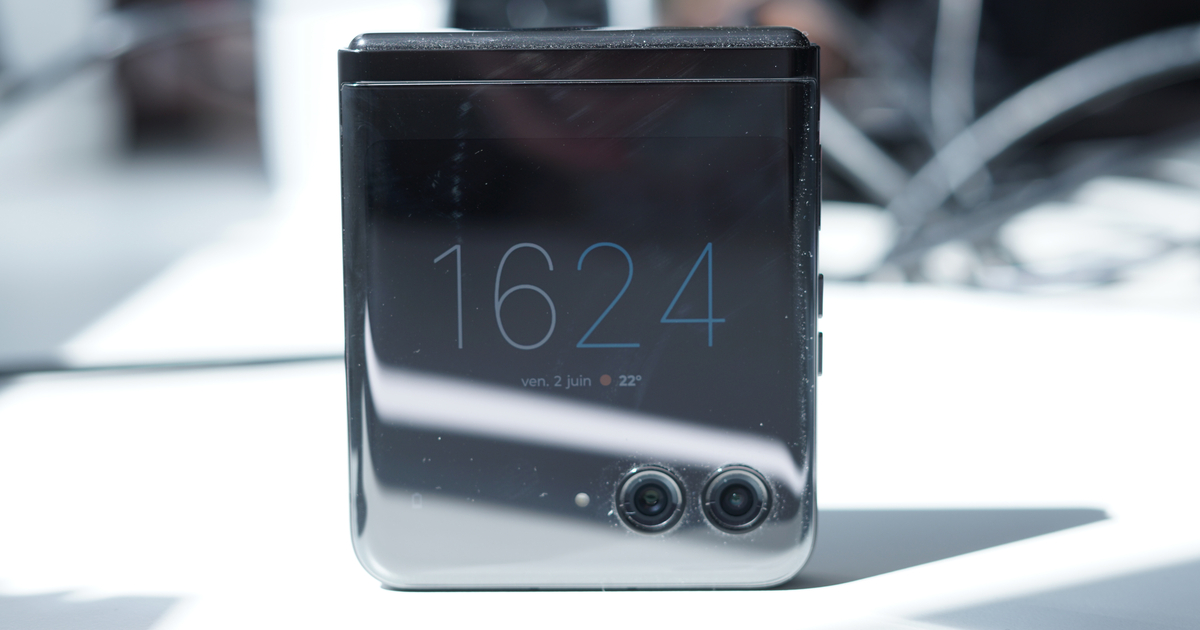Motorola Razr 40 Ultra
 Fnac.com
Fnac.com1,199.00
 baker.com
baker.com1,199.00
 Darty.com
Darty.com1,199.00
 Fnac.com marketplace
Fnac.com marketplace1,199.00
 Lenovo
Lenovo1,199.00
 Rakuten
Rakuten1,250.22
 Amazon
Amazon1,420.00
 Amazon Marketplace
Amazon Marketplace1,472.67
How the pricing table works
Disable your ad blocker to access all the links above.
The external screen of the Razr 2022 was among the most interesting on the folding smartphone market in clamshell format, which is still looking for itself. With its diagonal of 2.7 inches and its Oled screen, it displayed 800 x 537 pixels, and was content with a brightness contained at 372 cd / m². Does his successor do better?
The Motorola Razr 2023 does not just change its name to be more in line with the Edge 40, the brand’s high-end smartphones. This model called Razr 40 Ultra also inaugurates a new external screen widely teased before the announcement of the device, and which we submitted to our laboratory tests.
It is clear that with a 3.6 inch screen, the available surface is now much more comfortable for navigation. Be careful though: the two photo modules and the flash that accompanies them largely encroach on the space available. Still, this is a real screen, as large as that of the first smartphones (3.5 inches for the iPhone 3GS…), and which can display all types of applications. Not all of them are immediately accessible: it is up to the user to choose the available shortcuts, in order to avoid tedious navigation within too many apps.
Mirror…
We carried out our usual tests on this external panel. And an element, which had caught our eye from the outset, imposed itself under our probes: the secondary screen of the Razr 40 Ultra is particularly subject to reflections, in addition to retaining fingerprints and dust. Our measurements report a reflectance of 114.6%, which is 14.6% better than our usual reference mirror – a standard mirror that isn’t the most reflective on the market.
Such reflections allow, or almost, to use the screen as a mirror when it is not lit; the Razr 40 Ultra being the most subject to glare in our comparison, we cannot imagine that this is not a deliberate choice on the part of Motorola, to attract the eye with the “brilliance” of its smartphone, or to allow a use almost worthy of a pocket mirror. Remember that on average, the smartphones in our comparison have a reflectance of around 47%.
But these reflections are likely to affect the readability of the screen, especially when used in direct sunlight, since you can see your face there. Fortunately, Motorola has not skimped on the brightness of this AMOLED panel. We found up to 1012 cd / m², which is worthy of good conventional smartphone screens today. This rate is obtained in strong light, when you opt for automatic brightness. Motorola therefore chooses to compensate for high reflectance with high luminosity. For the display of simple information (notifications on a black background), this is not annoying. It will probably be more so if you plan to watch videos on this slab under the midday sun. In which case, it is better to open the smartphone, its interior panel being for its part very little subject to reflections, as are most often pOled screens.
… my beautiful mirror
The external screen is here calibrated in “natural colors” mode. © The Digital
In addition to the reflections it concedes, the exterior screen of the Razr 40 Ultra has the merit of offering a good quality display, which is all the more important since it allows you to use all types of applications, with a resolution of 413 ppi identical to that of the internal screen of the device. It is well calibrated, with its delta E of 1.2, and its average color temperature of 6349 K, only slightly warmer than the reference 6500 K. To obtain these results, it is necessary to opt for the “natural colors” display mode, which we also recommend for the internal screen of the Razr 40 Ultra, Motorola opting by default for a “saturated colors” mode with cold hues (7216 K) and suffering from some color shifts (delta E of 3.4). Finally, note that Motorola offers a refresh rate up to 144 Hz: with such a small panel, on which it is hard to imagine running the most complex games, it’s almost too much. But nothing is too good to make potential buyers dream…
